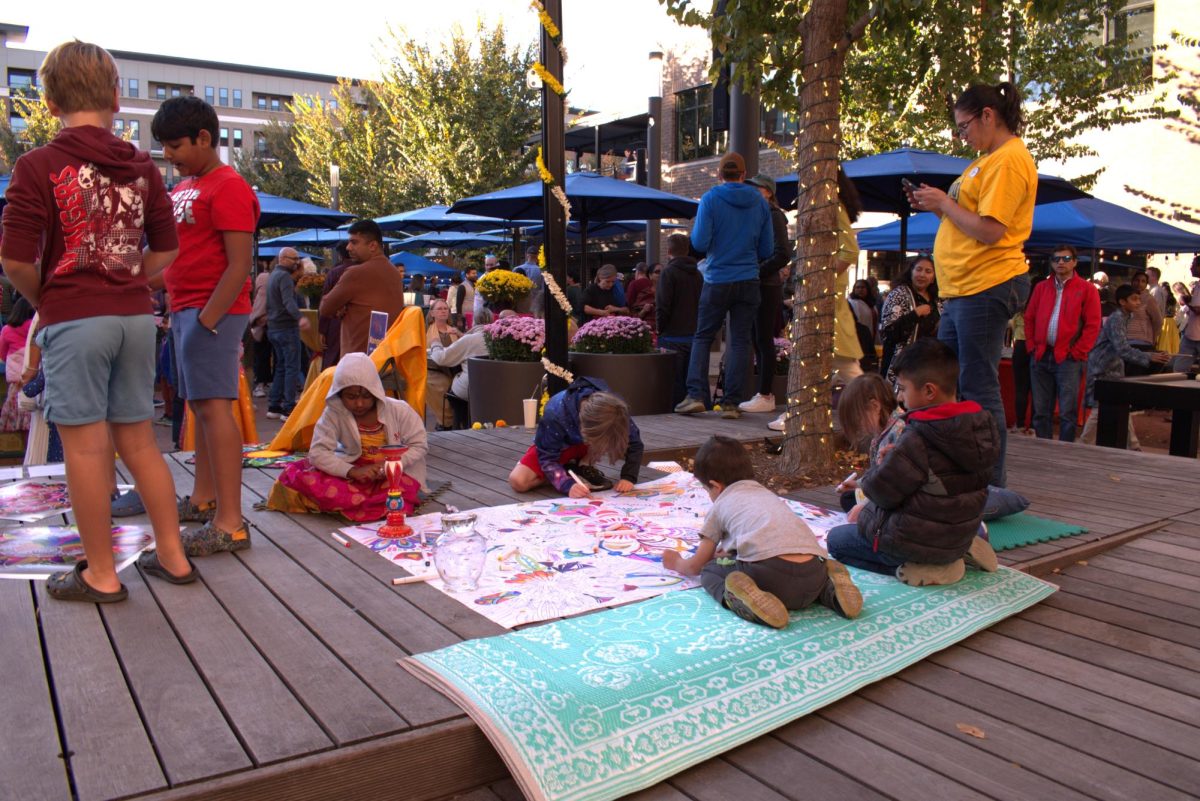By Beverly Jenkins
<[email protected]>
Next Thursday, March 19, students involved in the Model U.N. organization will leave for the IUPUI campus and remain there until the end of the following day.
Teams from schools statewide are invited to the conference; however, only centrally-located schools are expected to attend including Zionsville, Brebeuf and Cathedral, according to Tracy Hadden, sponsor of the Model U.N. team and social studies teacher.
Of the 450 students attending the conference overall, roughly 100 students will be from this school, Hadden said. Carmel also has several members among 14 leading countries.
For the two days, students will attend a conference and participate in a simulation similar to that of the actual United Nations.
“The competition will simulate what the real United Nations might do,” Hadden said.
Hadden used the situation in Darfur as an example, explaining there will be a group of students from various schools on the committee for human rights who might discuss the situation in Darfur and confer on what actions should be taken.
Sophia Paliza-Carre, the first and current president of the Model UN and senior also explained that while the official title of the event is a conference, it is somewhat of a competition as well.
Awards will be granted at the end of the conference on Friday for a variety of reasons including “Best Delegate” and, similarly, “Best Delegation” for each committee of which there are around 10, Paliza-Carre said.
“With cooperation as the goal, it’s hard to call it a competition, but there is incentive for students to do as well as possible,” Hadden said.
Regardless of the title, this will be the second conference CHS’s Model U.N. will have participated in this year. The first conference of 2009 took place in early January on Earlham College’s campus.
That particular conference has been hosted annually for years, although this was the first time Carmel’s team had attended, and, according to both Paliza-Carre and Hadden, they hope the team will attend more conferences in the future.
In fact, a third event called World Quest had been scheduled, but Paliza-Carre said the team had been misinformed of the date to attend.
“In the past,” Hadden said, “the Model U.N. used to be just a conference and meetings were held as needed to prepare for it, but now it’s become more of a club. Interest this year has increased.”
According to Paliza-Carre, Hadden and she are talking about transforming the Model U.N. into more of an international relations club than just a team concentrating on one conference per year.
Though still in the planning stages, they said they hope the team will become more like a club by hosting meetings more regularly as opposed to as needed and schedule more events.
Even though the team in the past has only had one major event and hosted meetings as needed, it doesn’t mean team members weren’t working hard year-round.
“It can be difficult to be in Model U.N.,” Paliza-Carre said. Delegates must prepare extensive research on the topics they are assigned.
“You really need to have an interest in the country you’re representing. You need to know the politics it’s involved in and how it fits in with other countries,” Paliza -Carre said.
However, Paliza-Carre said being a member is gratifying. “As a part of (Model U.N.), you develop a better world view.”
Hadden concurred, saying that understanding global events and crises makes a citizen more globally aware, and it drives everything in.
Not only that, she said, but “being involved introduces you to international relations and how the U.N. works. It also helps students become better public speakers and helps with interpersonal communications.”
Although it is too late for students to enroll in Model U.N. for the 2008-2009 year, Hadden said she announces the call-out meeting at the beginning of every school year with flyers and on the morning announcements. Typically, teams are formed in the fall, but papers are not due until the next spring.




























![Keep the New Gloves: Fighter Safety Is Non-Negotiable [opinion]](https://hilite.org/wp-content/uploads/2024/12/ufcglovescolumncover-1200x471.png)






!["Wicked" poster controversy sparks a debate about the importance of accuracy versus artistic freedom [opinion]](https://hilite.org/wp-content/uploads/2024/11/riva-perspective-cover-1200x471.jpg)









































![Review: “We Live in Time” leaves you wanting more [MUSE]](https://hilite.org/wp-content/uploads/2024/12/IMG_6358.jpg)
![Review: The premise of "Culinary Class Wars" is refreshingly unique and deserving of more attention [MUSE]](https://hilite.org/wp-content/uploads/2024/12/MUSE-class-wars-cover-2.png)
![Introducing: "The Muses Who Stole Christmas," a collection of reviews for you to follow through winter [MUSE]](https://hilite.org/wp-content/uploads/2024/12/winter-muse-4.gif)
![Review: "Meet Me Next Christmas" is a cheesy and predictable watch, but it was worth every minute [MUSE]](https://hilite.org/wp-content/uploads/2024/11/AAAAQVfRG2gwEuLhXTGm3856HuX2MTNs31Ok7fGgIVCoZbyeugVs1F4DZs-DgP0XadTDrnXHlbQo4DerjRXand9H1JKPM06cENmLl2RsINud2DMqIHzpXFS2n4zOkL3dr5m5i0nIVb3Cu3ataT_W2zGeDAJNd_E-1200x884.jpg)
![Review: "Gilmore Girls", the perfect fall show [MUSE]](https://hilite.org/wp-content/uploads/2024/11/gilmore-girls.png)
![Review in Print: Maripaz Villar brings a delightfully unique style to the world of WEBTOON [MUSE]](https://hilite.org/wp-content/uploads/2023/12/maripazcover-1200x960.jpg)
![Review: “The Sword of Kaigen” is a masterpiece [MUSE]](https://hilite.org/wp-content/uploads/2023/11/Screenshot-2023-11-26-201051.png)
![Review: Gateron Oil Kings, great linear switches, okay price [MUSE]](https://hilite.org/wp-content/uploads/2023/11/Screenshot-2023-11-26-200553.png)
![Review: “A Haunting in Venice” is a significant improvement from other Agatha Christie adaptations [MUSE]](https://hilite.org/wp-content/uploads/2023/11/e7ee2938a6d422669771bce6d8088521.jpg)
![Review: A Thanksgiving story from elementary school, still just as interesting [MUSE]](https://hilite.org/wp-content/uploads/2023/11/Screenshot-2023-11-26-195514-987x1200.png)
![Review: "When I Fly Towards You", cute, uplifting youth drama [MUSE]](https://hilite.org/wp-content/uploads/2023/09/When-I-Fly-Towards-You-Chinese-drama.png)
![Postcards from Muse: Hawaii Travel Diary [MUSE]](https://hilite.org/wp-content/uploads/2023/09/My-project-1-1200x1200.jpg)
![Review: "Ladybug & Cat Noir: The Movie," departure from original show [MUSE]](https://hilite.org/wp-content/uploads/2023/09/Ladybug__Cat_Noir_-_The_Movie_poster.jpg)
![Review in Print: "Hidden Love" is the cute, uplifting drama everyone needs [MUSE]](https://hilite.org/wp-content/uploads/2023/09/hiddenlovecover-e1693597208225-1030x1200.png)
![Review in Print: "Heartstopper" is the heartwarming queer romance we all need [MUSE]](https://hilite.org/wp-content/uploads/2023/08/museheartstoppercover-1200x654.png)



